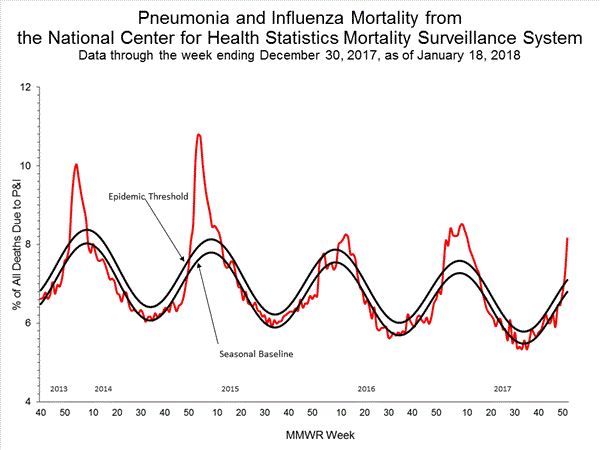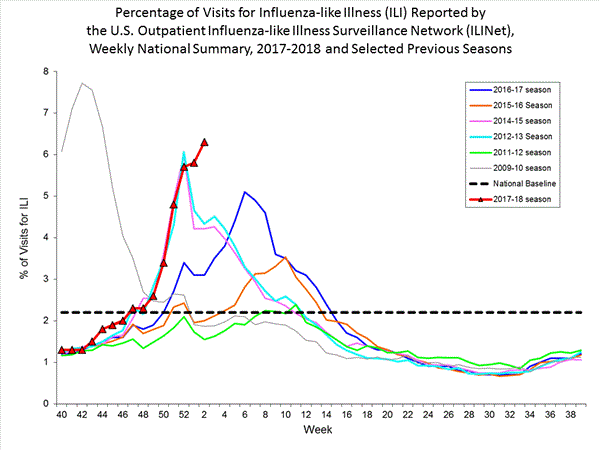I don't know about you, but the news coverage of this year's flu season seems to me to be a bit over the top. Certainly we are having a busy flu season, but it helps to compare to prior years to put into perspective. I haven't heard a news report that's done that so far.
Things seemed to really take off in early January, both in our area and around the country. The CDC flu web site is the best resource we have, but it does lag behind by about a week, so the most recent data we have today are for the week ending January 13. Mortality data lag even farther behind.
As you can see, the pattern for overall pneumonia and influenza mortality so far is similar to prior years, just too early to determine where this year will fall in terms of severity of illness:

For the country as a whole, the outpatient influenza-like illness surveillance so far is similar to the 2012-13 and 2014-15 seasons:

In Maryland so far this year, a little above 70% of isolates tested have been influenza AH3N2, the strain that likely will have the lowest vaccine efficacy (CDC has not released efficacy estimates yet, it's a bit early). A little under 20% of strains are the AH1N1 2009 strain, and about 9% are influenza B strains. Oseltamivir (Tamiflu) resistance has been detected in 2 of 168 samples of AH1N1 but in none of 587 AH3N2 and 209 influenza B strains so far this season.
Remember, it's not too late to immunize children for influenza. We likely will be dealing with a significant amount of flu for several weeks. Immunity develops about 2 weeks following immunization.
